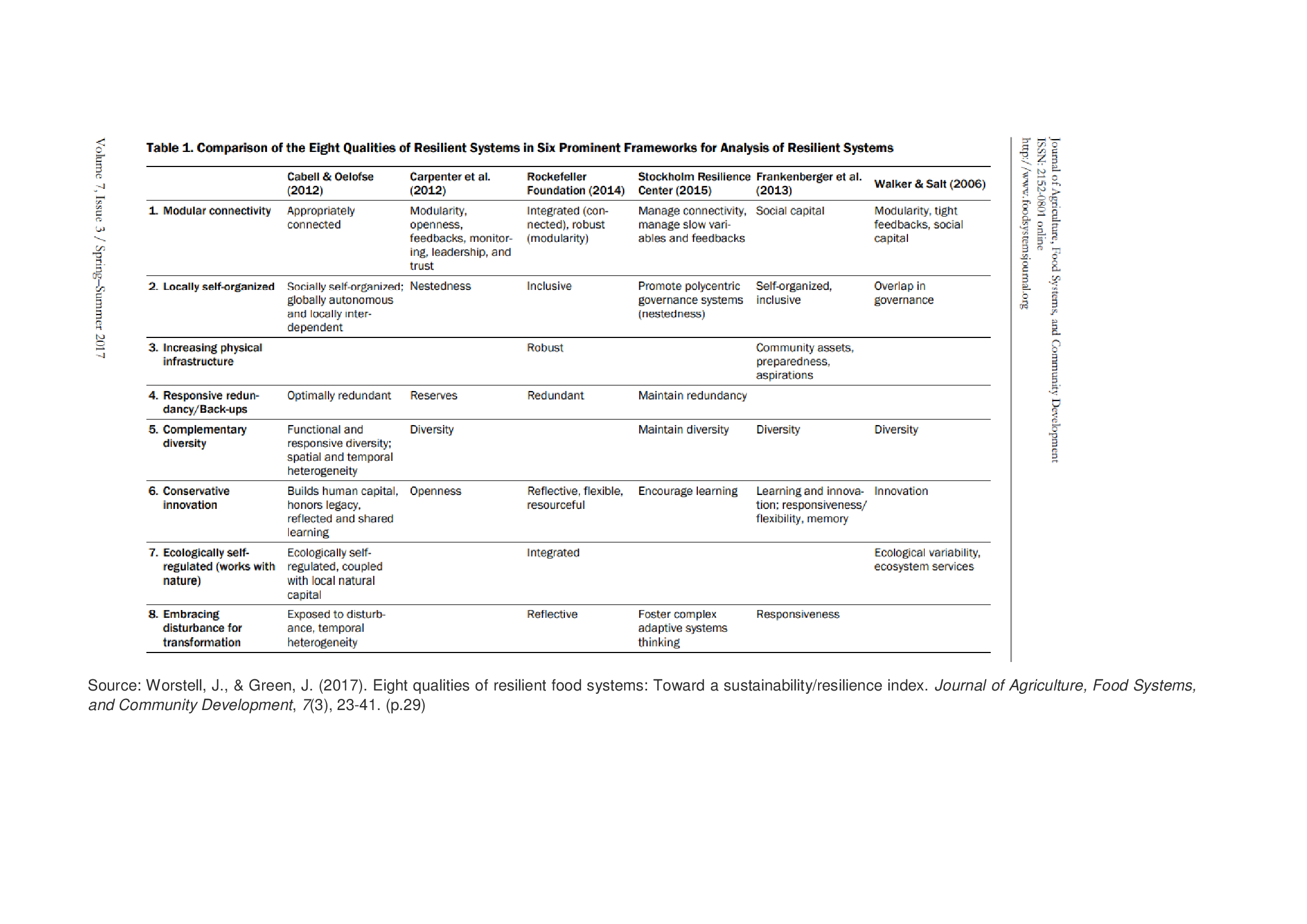The stages in the evolution of the concept correspond to its three main meanings, clearly discussed by Davoudi (2012; 2018). Thus, resilience has been framed as persistence, adaptation, and transformation.
- Resilience as persistence and stability (from physics and engineering) denotes “the capacity to withstand external shocks and bounce-back to the prior stable equilibrium, which is considered as the state of “normality.” According to this engineering resilience, “the resistance to disturbance and the speed by which the system” returns to the original state are “the measures of resilience” and here, the measure of resilience is how long it takes for the system to bounce back (Davoudi 2012:300, Davoudi 2018: 3).
- Resilience as adaptation (from ecology) refers to “the magnitude of the disturbance that can be absorbed before the system changes its structure” (Holling 1996:33), thus the measure of resilience is “how much disturbance it can take and stays within critical thresholds” (Davoudi 2012: 301).
Both definitions above are based on equilibristic and closed-systems theories.
- Resilience as the capacity for transformation - framed by the theories grounded on the principles of socio-nature complexity – assumes the systems (societies, communities, cities, organisations, etc.) to be complex, emergent, non-linear, self-organising. Here a clear distinction between social and natural elements has been dismissed. The role of unpredictable factors (“black swan”) and dynamic connections of ignorance and non-knowledge has been emphasised. Here, the prior state (before disruption) is considered as the state of undesirable “normality”, thus resilience doesn’t mean the capacity of bouncing back, but it is about capacity to break away and transform into new form of “normalcy” through the process of self-learning and recovery.
Recent literature and strategic documents still reflect the mix of the approaches. For instance, in “UN Research Roadmap for the COVID-19 Recovery” (2020: 88), resilience is understood as “the ability to resist, absorb, accommodate to and recover from the effects of a hazard in a timely and efficient manner, including through the preservation and restoration of essential basic structures and functions” (the definition by United Nations Office for Disaster Risk Reduction (UNISDR) has been applied). Both in scientific literature and political programs it is emphasised that the core of resiliency is the ability to learn (by people, organisations, communities, etc.) in the sense that disruptions give the opportunity for reviewing and critical thinking on the ‘normalcy’ before the crisis.
Aldunce et al (2014a) present an interesting reflection on resilience present elaborated on a base of discourse analysis (both scientific publications and the interviews with practitioners). The authors distinguish three storylines about social/cultural factors hampering uses of resilience as a strategic concept: mechanistic/technocratic, community based, and sustainability.
First, a mechanistic/technocratic storyline stresses the role of norms and regulations. According to the practitioners, the result of approaches focused on recovery and response are the situations when people are not being well prepared: in their opinion, the resilience approach requires better preparation, plans, rules in place, and disaster exercises (rehearsals). A central role has been assigned to government and public institutions, and the way to being well prepared for any future disaster is to have information and knowledge.
Second, a community-based storyline, stresses the importance of community participation, engagement, ‘self-reliance’, and building social capital. Interviewees/practitioners noticed that the problem is “that communities are not taking sufficient responsibility for themselves and they argued that one of the main causes for the latter is based in governments and aid agencies that create dependency and take away people’s initiative to do things for themselves. Interviewees also attributed blame to the modern lifestyle that results in increasing individualism, provoking lack of social connections and capacity to assist each other, loss of interest in community values as a whole and not having a shared societal vision, or a sense of place and belonging” (Aldunce et al, 2014a: 5). However, a study by Sharifi based on literature review and presenting an analytical framework identifying several criteria for evaluating performance of resilience assessment tools, show that existing tools have failed to adequately reflect the dynamic nature of resilience. In many cases they operate over various geographic and temporal scales, neglecting cross-scale relationships and community resources, moreover, local communities are often being assessed as stand-alone and isolated entities (Sharifi 2016).
Third, a sustainability storyline derives from an assumption that humans are part of nature. Here, resilience is blocked by disconnection of people from nature – people want to “regulate” and control nature, they do not accept the disasters as a ‘normal’ aspect of reality. This storyline stresses the need to learn to live in a unstable world and to accept uncertainty as part of ‘nature’.
The analysis of the three storylines is concluded by the finding that self-reliance is a central issue in practitioner discourse on resilience, and that self-reliance is differently understood by practitioners and citizens (for instance, self-reliance as self-responsibility versus self-organization as self-management) and more attention needs to be paid to the tension that emerges between these two conceptualisations. “Thus, it is important to recognize the potential danger embedded in promoting values of self-reliance, if this is understood strictly as ‘not waiting for external help’”, say the authors (Aldunce et al, 2014a: 8). These findings go in accordance with Davoudi’s notion that “there is a close affinity between self-reliant resiliency and the neoliberal emphasis on individualization of responsibility” and that more attention needs to be paid to unequal power relations that can disrupt feedback loops and channels of communications (Davoudi 2018: 4).


